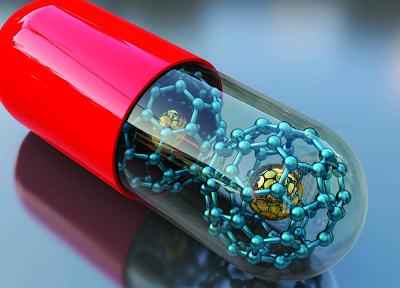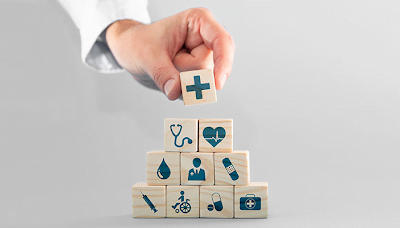The Internet of Things (IoT) is going to change the future of healthcare. According to some people, it might be just another buzzword used to talk about the future, but it really is going to improve the future of healthcare by enhancing the interoperability and connectivity of modern devices for patient care and much more. The term IoT defines a whole field of smart devices that are connected to share important data and information over the internet and enables the automation of certain tasks. When we are talking about healthcare, IoT can be used to define the interconnected role of smart devices such as patient monitors, smartwatches, health trackers, medical implants, and many other such devices that can be used to send or receive data via established networks to monitor a patient’s activity. In the future, data sharing and automation will help healthcare providers better access patient information anytime from anywhere. IoT will turn all these dreams into a reality. The things that will contribute to the success of the Internet of Things (IoT) in supporting the health and well-being of people include, the success of Artificial Intelligence, improved digital platforms, and widespread internet connectivity.
What’s the future of IoT in healthcare
This article will take you through the potential applications of IoT in healthcare. Some of the applications are currently in use and others are going to turn into reality real soon. The advent of the IoT in healthcare will work towards creating an improved ecosystem of patient care with reduced time in a cost-effective manner. Such innovations will help both care providers and patients.
Patient care irrespective of the location
IoT-enabled services will eliminate the dependency of people on a location for patient care. Instead of going to a hospital or a clinic to utilise certain technology and having to wait there, we have the leverage of taking that technology directly to the patient. IoT-enabled solutions lessen the dependency of doctors and patients on a specific location. A good example of an IoT-based diagnostic device is Philips Lumify; which is a mobile ultrasound system that allows a doctor to perform an ultrasound at home. This will help in quick diagnostics at the time of need, such as the ultrasound of a patient would be possible in an operating or inspection room without having to go to the echo room.
Portable ultrasound devices are a huge success not only in hospitals and homes but at the site of an accident too. Nowadays, flying medevac helicopters have an ultrasound system that can take echo images of the person who has been in an accident on the spot. The images can be sent over to the doctors at the hospital so that they can prepare themselves according to the gravity of the situation. Live streaming of echo images will also assist caregivers on the spot of the accident to take appropriate measures based on expert advice. Also, live-streaming is a better approach towards serving people at remote locations that are underserved in terms of healthcare. Such technology will work towards a better future where connected technology will increase access to care where it is required the most.
Continuous proactive care with IoT-enabled services
This side of IoT-enabled services closely resembles the technologies discussed in the above paragraph. In addition to providing location-independent patient care, IoT services can be compiled with Artificial Intelligence and Machine Learning to experience uninterrupted, continuous, quick, proactive, and efficient healthcare services whenever and wherever required. Regular monitoring of the vitals of an individual is required to better understand his health condition. Just a single visit’s records are not enough to be taken as a major representation of a patient’s health. Wearable biosensors are gaining widespread use among patients for continuous monitoring of their health. These health stats can be shared with the care provider in real-time for cautious monitoring. Smart biosensors analyse the data, prepare a report, and send it over to the caregivers whenever attention is required. This will help prevent deaths and serious health conditions that occur as a result of delays in treatment. As the name suggests, the internet is behind the success of IoT- enabled devices. IoT devices coupled with artificial intelligence technologies can help in the detection of early signs of deadly diseases. Moreover, robotic health monitoring devices might help in reducing the burden of caregivers who have to work night shifts for patient monitoring.
Smart IoT devices enable video calling between the doctor and the patient for analysing and deciding the best course of treatment for the patient. According to the studies, it is evident that robotic health monitoring devices can help in reducing mortality rates, save a huge amount of money, and lessen a patient’s stay time in the ICU. The stats here show the power of continuous and proactive patient monitoring.
Patient care at home
With the advent of smart devices, the need of going to hospitals for basic tests has reduced drastically as IoT-enabled devices allow continuous health monitoring through wearable health trackers and personal health records. Healthcare professionals also get better ways of communicating and keeping track of a patient’s health outside their clinic. Patients can consult doctors prior to and after medical treatments in order to stay fully aware of their condition. This will help in shortening the stay time of a patient in the hospital, keeping a patient in stable condition, and preventing readmissions. Patients can get premium care and recover quickly at the comfort of their home, without having to pay a huge amount for costly hospital beds. Some hospitals are currently practising this approach of caregiving to the patients and some are in the line for indulging in IoT-based patient care at home.
Better information exchange
Not long ago, it used to be the doctor’s responsibility to keep tabs on the vitals of their patients, but with the advancement in technology people have become self-conscious of their health. IoT devices have played a major role in making this shift in the interest of people for taking better care of their health. It has created a two-way information exchange environment for active participation in health-related information collection and sharing. Some platforms allow senior citizens to connect to their friends, doctors, and family members to keep everyone updated about their health status. These applications send notifications to the members in case of an emergency, allowing timely intervention. This saves a lot of time and effort that can be devoted to patient care in other ways. There is a lot more that can be done to improve the performance of IoT-based devices and get more insight into emerging health risks in the future with help of the latest technologies.
Conclusion
IoT devices are all set to change the future of healthcare, which is a result of time invested in developing better connectivity, compact devices, and better data analytical tools. These technologies felt like a dream in the past but with growing technology IoT devices are helping people connect for better health monitoring and data exchange at the ease of their homes.





